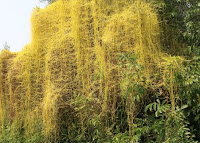1. Pebrine:
Pebrine
cause by a protozoa namely Nosema bombycis. The larva of muga silkworm generally got
infected from the shell of the eggs. This way this disease is inherited from
the infected mother. This disease may also infected leaves from host plants.
When infected, the larva becomes weak and the silk glands are not properly developed.
Control:
a) The disease can be controlled by keeping the
live cocoon in a temperature of 340 C at the prepupal stage for
about 16 hours.
b) Another method of disease control is heating
the eggs after deposition in 400C in a hot water bath for 20-30 minutes.
2. Flacherie:
It is caused by virus followed by a secondary bacterial infection.
Locally this disease is known as “Mukhlaga”. This disease is commonly seen in
muga-rearing farm during summer. In this disease, infected larva die soon and
sometimes entire brood is completely destroyed.
Control:
a)
To control this
disease, overcrowding of the larvae must be prevented.
b) Only disease free seeds should be considered for rear.
Life cycle:
The
life cycle of Muga silkworm consists of four distinct stages. These are 1. Egg (কণী) 2.
Larva (পলু) 3. Pupa (লেটা) 4. Moth (চকৰী). To complete the life cycle it takes
48-52 days in summer and 145 – 150 days in winter.
1. Egg
3. Pupa
4. Moth


























